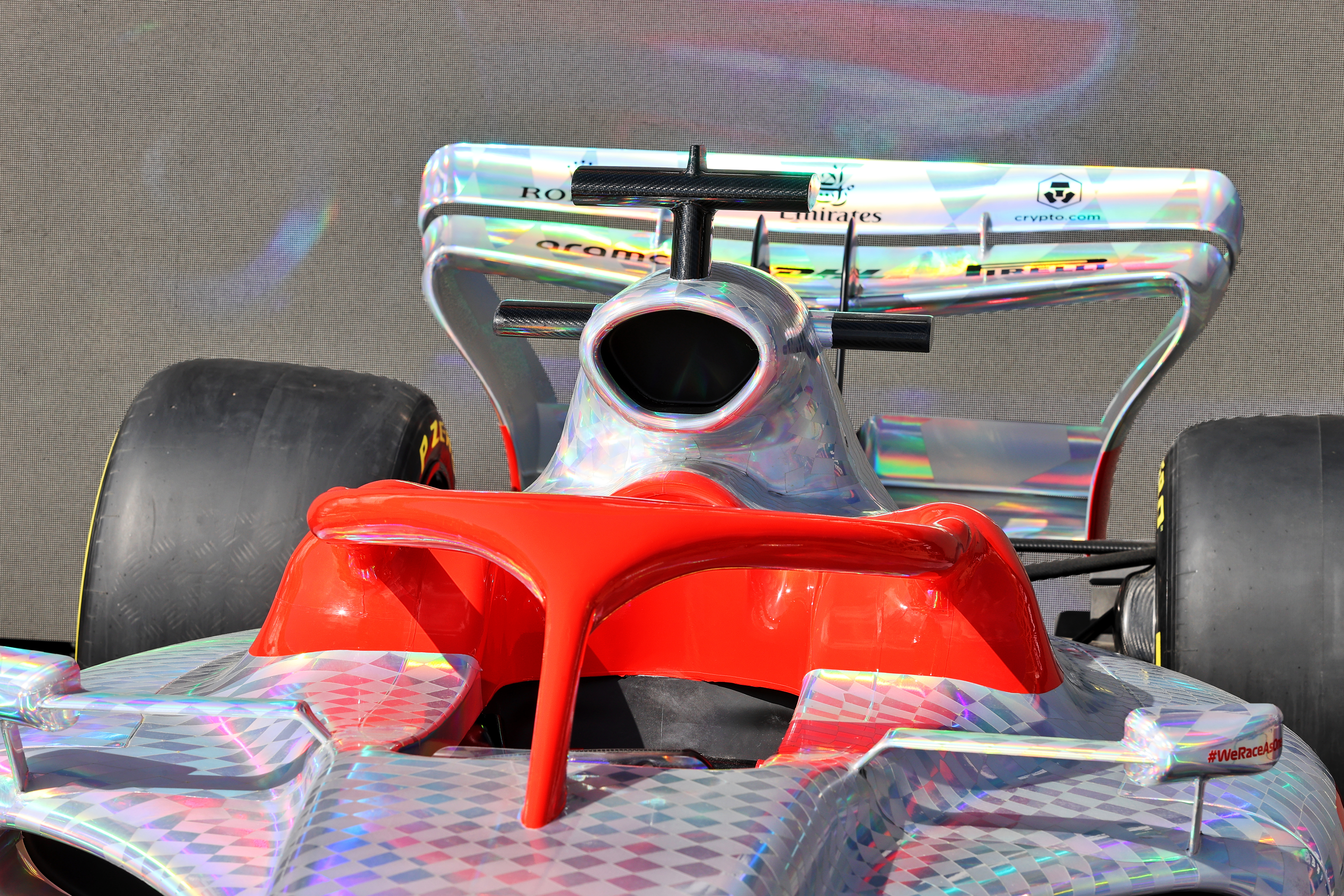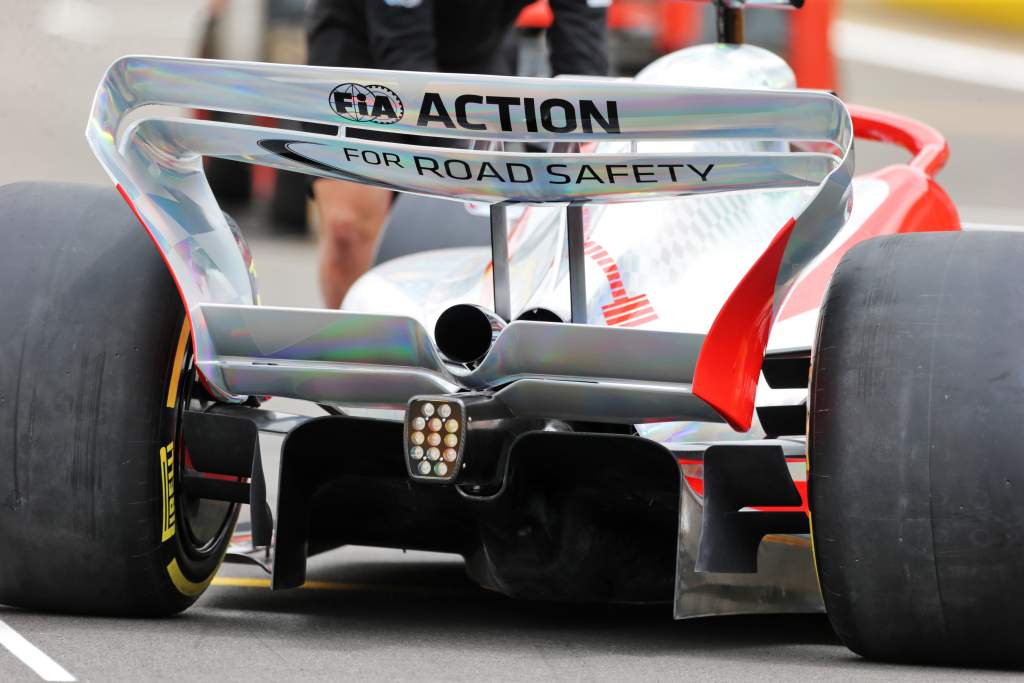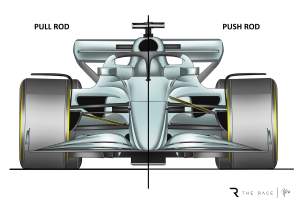Up Next

The rear wing was always going to change significantly given the objective of the 2022 regulations is to make it easier for cars to follow each other, with a simplified, highly-prescribed design being introduced.
The shape has changed significantly, still comprising two closed elements but with the upper parts of the endplates eliminated in an attempt to reduce the turbulence created by the rear wing endplate upper corners.
If you watch a car running in damp or very humid conditions, you can see a vortex coming off this area. The reason is that there are three different airflow regimes in that area – under the wing is low pressure, above the wing is high pressure and on the outside of the endplate is more or less free stream.
Where these all meet up, it sets up a rotation that gets pulled down into the low-pressure area behind the rear tyre. It’s probably a car’s length at least behind the rear tyre, but it is right where the following car that is overtaking might just be.
Blending the flap into the endplate, similar to the turned-up wing tips on an aeroplane, should reduce this vortex. On both a plane and an F1 car, this vortex coming off the rear wing corner generates drag as both are simply being pulled along behind the car.

The beam wing also returns for the first time since it was banned as part of the 2014 rule changes. On the promotional car produced by F1 last year it is also fairly aggressive.
This is part of making the complete rear end of the car work as one. The beam wing helps the diffuser and the upper wing by setting up a turning moment in the airflow at the back of the car. The aim of this is to get as much of the turbulence as high up as possible to not affect a following car quite as much.
The diffuser itself is actually quite narrow on this demo car. It is taller so in effect working the centre of the car much harder. I wouldn’t be surprised if this height-to-width ratio has more separation problems and when it does happen it could be a bit more dramatic.
Last year’s version was turned out behind the rear tyres to get the low pressure behind them to influence the diffuser. However, on this version there is a two-element ski ramp between the diffuser walls and the inside of the rear wheels.
Also, the floor footplate below these turning vanes is reduced in plan view, these ski ramps should generate a higher turbulence wake so it will not affect the following car as much when it is close to the leading car.
Unfortunately, the dreaded DRS remains and we can only hope that these new regulations work well enough for it to be done away with in the future. It will be interesting to see how the teams go about integrating the design of the DRS actuator and where they will split the rear flap to allow it to open without generating the vortex that this new concept has tried to eliminate.
It’s a bit like some of the sportscars of the past where the headlights popped up out of the bonnet. Aerodynamics didn’t matter as much at night.
There are so many changes in one package of regulation changes, so it would be very easy to get yourself lost in how to make it all work together. It will certainly take a couple of hits for teams to get it right and the first tests will be all about finding out if what you have created does what you think it should. Then, you take it from there.






